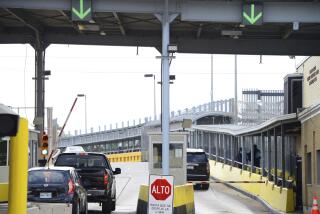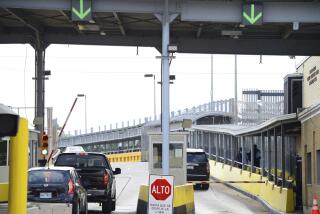Knee Surgery Deaths Investigated
- Share via
MINNEAPOLIS — State and federal health officials are investigating the deaths last week of three Minnesota patients who apparently acquired the same rare and rapidly fatal bacterial infection while undergoing knee surgery at two hospitals.
Two men died Nov. 11 in St. Cloud and the third died Nov. 16 in Alexandria, 72 miles away. Each had undergone surgery either three or four days earlier. No cause of the infections has been found, although investigators are focusing on supplies and medicines used in the operations.
“So far, we are unable to find a common thread” linking the three cases, Harry Hull, Minnesota’s state epidemiologist, said Wednesay.
Hull and other state health officials called about 140 hospitals Sunday night in Minnesota and asked that they suspend elective knee surgery for a week. The federal Centers for Disease Control and Prevention, which is helping with the investigation, has contacted other states, seeking reports of similar recent cases among people having knee or other joint surgery. But the agency has not called for a wider moratorium.
Hull said that unless new cases appear in the next few days, the moratorium will be lifted Sunday.
One of the patients, a 23-year-old man, underwent a graft of cartilage in his knee. The other two, a 60-year-old man and a 78-year-old man, had knee replacements, which involve the implantation of prosthetic joints.
A blood culture from the youngest man, who had surgery at St. Cloud Hospital on Nov. 7, grew a bacterium that is sometimes found in human feces but rarely causes human disease. The microbe, which also lives in soil, is responsible for occasional outbreaks of fatal infection in cattle and sheep.
Clostridium sordellii produces a toxin and can cause a rapid illness with shock and multiple organ failure. No microbe was isolated in the two other cases, but because the patients had the same characteristic downhill course after similar operations, public health officials believe they may have been infected with the same bacterium.
“That is an assumption,” Hull said. One patient was embalmed soon after death, and blood cultures done after the third patient died have not grown the organism. “We may never be able to prove they had that infection,” Hull said.
Investigators are seeking other cases of people who suffered complications after bone or joint surgery at Minnesota hospitals. Health officials are also asking hospital microbiology laboratories whether any atypical species of Clostridium have been isolated in recent weeks or months.
Because the first two deaths occurred at the same hospital, investigators initially believed that contamination at that institution caused the outbreak. There is a construction site at the hospital, and a remote possibility being considered was that soil bacteria could have entered the building. But the discovery of a third case at a different hospital “changes the characteristic of the investigation dramatically,” Hull said.
The investigation is focusing on such materials as sutures, surgical drapes and gauze, and medicines and other items that would probably have been used in all three procedures.
More to Read
Sign up for Essential California
The most important California stories and recommendations in your inbox every morning.
You may occasionally receive promotional content from the Los Angeles Times.













